Katydids
Katydids are seldom seen, because they camouflage so well with greenery.
My 15 minutes (well, closer to five minutes) of fame came in 2008 when I was contacted by Ontario Today to identify a loud “bug” that was causing an uproar in a suburb of Ottawa. It was a common true katydid, a cricket and grasshopper relative that reaches the northern extent of its range in southern Ontario. Only occasionally is it heard north of the Carolinian zone along the Lake Erie shoreline.
To my great surprise, this southern creature also appeared in my neighbourhood last summer and sang incessantly from mid-August to mid-October. The single male, calling after sunset as common true katydids do, became infamous on my street. Neighbours complained about the noisy “tree frog” that just wouldn’t shut up.
Residents to the south would smile at this, for their late summer nights throb with the voices of thousands of common true katydids. I’ve heard this chorus on Pelee Island – so loud my B&B window needed to be firmly shut after dark. And this summer I heard the katydid cacophony again when I traveled to Clarksville,Tennessee for the solar eclipse.
I was fascinated by the eclipse itself, but also how the katydids responded to it. They called en masse precisely when totality occurred. It was like throwing a switch. And when the sun re-emerged two minutes later from behind the moon? The katydids promptly shut up.
Though the amazingly loud common true katydids aren’t usually found in the Headwaters, several quieter species are. They are seldom seen, however, because they camouflage so well with greenery. Some even mimic leaves, right down to the pattern of the leaf veins.
One gorgeous species – the black-legged meadow katydid – sings its buzzy call during the day at this time of year around wetland margins.
I miss last summer’s katydid. Though my neighbours would demur, its regular evening nocturne was a pleasure to listen to.
Have you heard them?
Check out this resource: http://songsofinsects.com/katydids/common-true-katydid
Related Stories
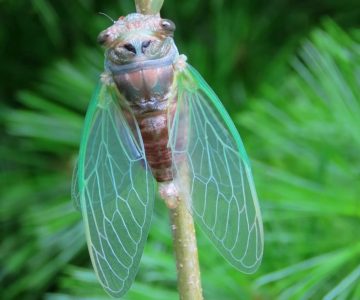
Singing Insects
Sep 8, 2020 | | Notes from the WildYou likely won’t see many of these without a little dedicated searching.

Spicebush Swallowtail Caterpillar
Sep 4, 2018 | | Notes from the WildI’ve written about our remarkable caterpillars before, but so many interesting ones inhabit our hills that another look is warranted.
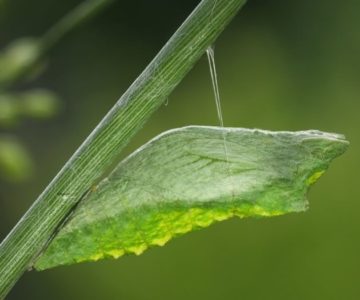
Chrysalides
Jul 4, 2017 | | Notes from the WildWith a few exceptions, chrysalides are designed to be overlooked, to allow the wondrous alchemy of metamorphosis to proceed undisturbed.
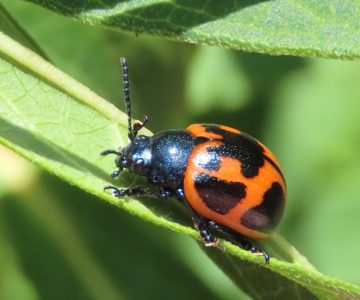
Beetle Mania
Aug 4, 2020 | | Notes from the WildFour beetles among hundreds of thousands, each with a unique story to tell.
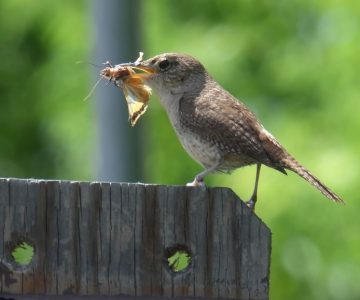
Birdsong – Brought to You by Bugs
Jul 4, 2018 | | Notes from the WildI recently had the pleasure of watching a pair of house wren parents feed their babies in a backyard nest box.
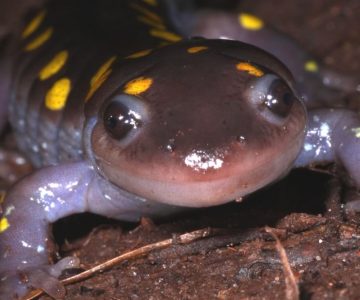
CSI: Natureworld The Case of Burying Beetle Bob
Nov 2, 2018 | | Notes from the WildA CSI probe into Bob’s disappearance has revealed damning evidence linking Sam to the incident!

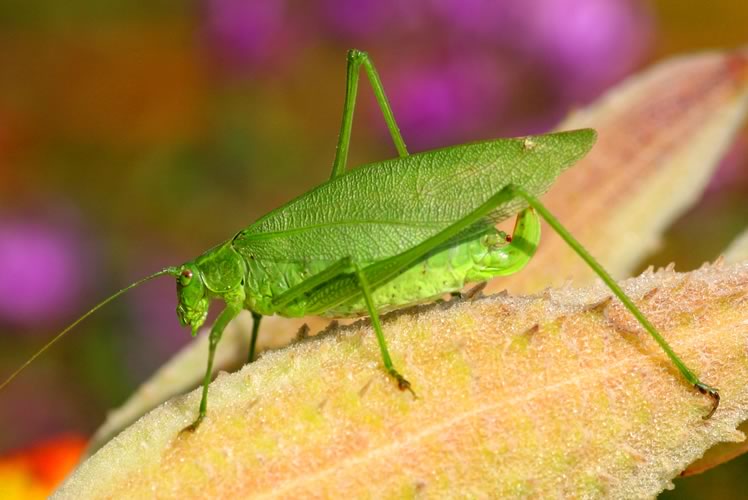
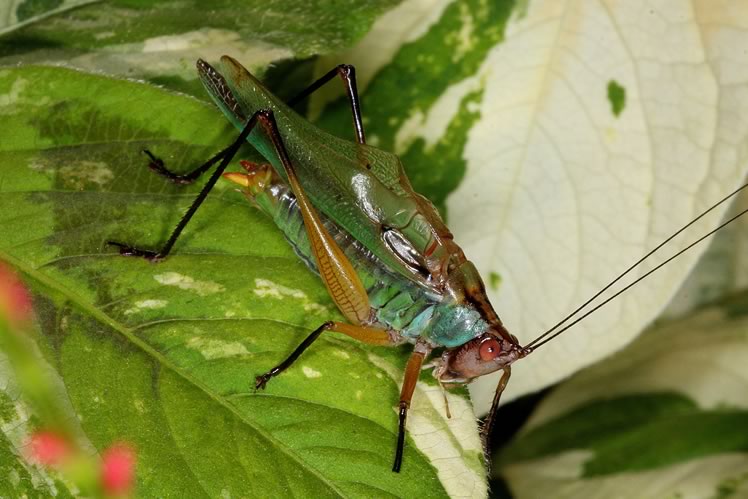
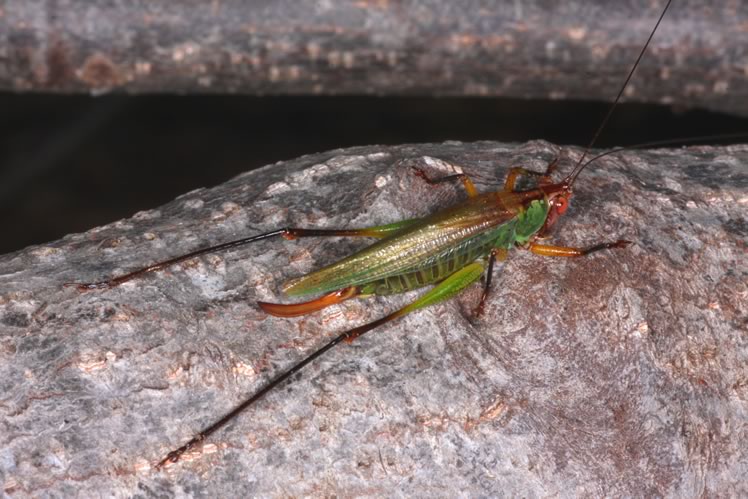
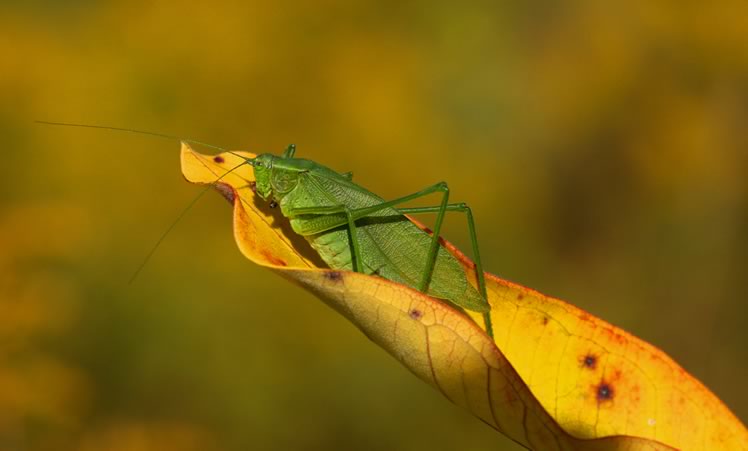








Hi Paula,
Glad they still call Ottawa home Paula! I love these critters and am currently visiting a colony in my town (Georgetown) to hear them at night. They congregate in the trees surrounding a local church… maybe seeking religious guidance. 🙂 Occasionally one or two will be heard in other parts of town… still waiting for them to disperse more widely. I suspect the presence of these insects here in Georgetown and Ottawa might be related to the transport of nursery stock from further south. Regardless they are a fascinating addition to our insect fauna!
Don Scallen on Oct 8, 2019 at 11:47 am |
Lovely article. I’ve been enjoying listening to Katydid for the past month or so. He is in a tree in Rideau Hall in central Ottawa. I only hear the one. I too hope more come to visit next year.
Paula Thompson from Ottawa on Oct 6, 2019 at 9:16 pm |
I appreciate your comments Noah!
I love the uproar these remarkably loud insects conjure. Shortly after writing this piece last year I was alerted to a colony of these Common True Katydids in Georgetown. This year there are more and they do an excellent job of disturbing peace during the evening. I admit to harboring a mischievous hope that their numbers continue to swell. I look forward to the creative theories that the noise will prompt.
You actually live in the northeastern fringe of the Carolinian zone in Ontario as defined by ecologists. But regardless, these katydids seem to be expanding beyond that (relatively) mild extremity of Ontario. The first thought, as you suggest, is to attribute the northward movement of species like this to climate change. Climate change could be the cause, but the natural world is stunningly complex. There are at least as many species of birds and animals moving south as north: fishers, otters, ravens, merlins for example. So species movement is obviously driven by more than just climate change.
If your katydid remains healthy, it should contribute its “voice” to the nocturnal soundscape of your community well into October.
Don Scallen on Sep 14, 2018 at 8:54 am |
What a beautifully written piece, Mr Scallen. I live on Spruce Street in Toronto’s Cabbagetown district — which is well north of the Carolinian zone of Lake Erie, no? (Hard, these days, not to put everything down to climate change).
At first, in mid-August 2018, I’d been prospecting the street and back lane, roughly located the source of the sound and thought maybe that satellite dish on top of a neighbour’s house was perhaps some new hi-tech anti-racoon device, but after leaving a note it turned out the sound that was driving me and my guests a bit mad was even closer to my neighbour’s bedroom and soon several families on the street were walking and pointing (it changed location at one point, having a choice of many huge tall trees) and trying to figure out what it was, chirping so loudly and varying only ever so infrequently from the rhythm of its dusk to midnight din.
And now we know what it is (and feel much better for it).
Thank you!
Noah Richler from Toronto M5A on Sep 13, 2018 at 6:03 pm |